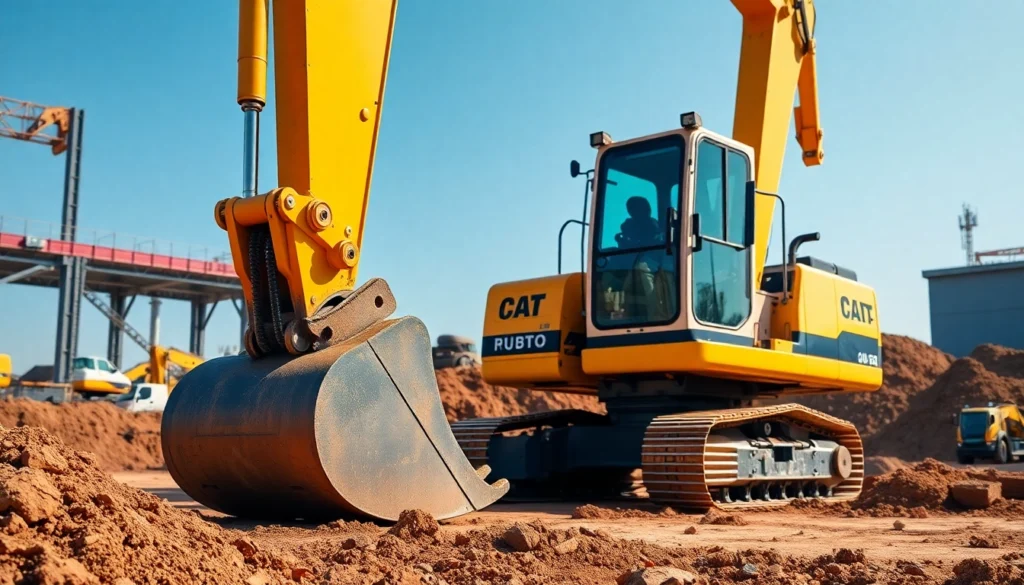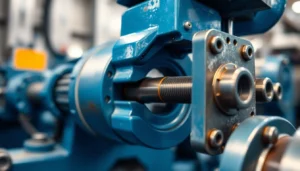
Understanding Excavator Rental Options and Types
Excavators are among the most versatile and essential pieces of equipment in construction, landscaping, and demolition projects. Whether you’re managing a small landscaping overhaul or a large-scale construction site, selecting the appropriate excavator is critical for efficiency, safety, and cost-effectiveness. With the wide range of excavator rental options available, understanding the different types and their suitability for various projects empowers you to make informed decisions that align with your operational needs.
When considering excavator rental, it’s vital to understand the fundamental distinctions among machine sizes, configurations, and attachments. These decisions directly impact project timelines, costs, and safety considerations, making an in-depth exploration necessary for optimal equipment utilization.
Mini vs. Large Excavator Rentals: Suited to Various Project Sizes
One of the primary classifications within excavator rentals pertains to size—namely, mini excavators and large excavators. Each category offers unique advantages aligned with specific project demands:
Mini Excavators
Micro and mini excavators typically range from 0.8 to 3 tonnes in weight. These compact machines are invaluable for projects that require precision in confined spaces, such as landscaping, trenching in narrow areas, or interior demolition. Their small footprint enables access to areas where larger machinery would be impractical, providing excellent maneuverability and reduced site disruption.
For example, micro excavators (around 0.75 tonnes) are ideal for garden landscaping, small residential renovations, or utility works. They often come with hydraulic attachments that expand their versatility, allowing tasks such as digging, grading, and even demolition of small structures.
Large Excavators
Larger excavators, generally ranging from 8 to over 20 tonnes, are built for heavy-duty tasks like large-scale excavation, mining, or infrastructure development. These machines provide greater digging depths, higher lifting capacity, and faster cycle times, making them suitable for significant projects where productivity and sheer power are priorities.
Choosing between mini and large excavators hinges on project scope, spatial constraints, and budget. For instance, a high-rise construction site may necessitate a 20-ton excavator to excavate large volumes of earth swiftly, while a small backyard landscaping task might only require a mini excavator.
Tracked vs. Wheeled Excavators: Which Is Right for Your Terrain?
Another critical consideration when selecting excavators is the type of mobility—tracked or wheeled—and how it influences machine performance based on terrain conditions.
Tracked Excavators
Tracked excavators feature continuous tracks or caterpillar tracks that distribute weight evenly across their surface, providing enhanced stability and traction. They excel on uneven, loose, or soft terrains such as mud, gravel, or uneven construction sites. Due to their ability to maneuver through rough conditions with less ground disturbance, tracked excavators are often the go-to choice for large-scale earthmoving or projects in challenging terrains.
Additionally, tracked excavators tend to have higher lifting and digging capacities when working on uneven ground because of their stability. They are ideal in rural or rough-site environments where terrain complexity is significant.
Wheeled Excavators
Wheeled excavators are mounted on rubber tires, providing greater mobility and speed on paved surfaces and stable ground. They are typically preferred for urban projects, roadwork, or situations requiring quick repositioning across multiple sites within a containment zone.
While they may have slightly lower lifting capacities compared to tracked models, their ease of movement on hard surfaces led to their popularity in rapid excavation or utility installation tasks in city environments.
In summary, choosing between tracked and wheeled excavators depends heavily on terrain characteristics, project duration, and mobility needs. For site-specific terrain—such as soft soil, mud, or uneven surfaces—tracked excavators are generally superior, while wheeled models are better suited for urban, paved, or well-maintained environments.
Specialized Excavator Attachments and Their Rental Benefits
Besides core machine types, excavator attachments significantly augment operational versatility. By renting specialized attachments, contractors and DIY enthusiasts can expand the scope of their projects without the need for multiple machines, thus optimizing costs and operational efficiency.
Common Attachments
- Buckets: Including standard digging buckets, trenching buckets, and grading buckets tailored to specific tasks.
- Hydraulic Breakers: For demolition of concrete or rock, enabling breaking tasks with minimal secondary equipment.
- Grapples and Clamshell Buckets: Ideal for handling debris, logs, or demolition materials.
- augers and Drills: For installing poles, pilings, or fencing efficiently.
- Thumbs and Grab Attachments: For precise material handling, especially when working with irregular objects or demolition debris.
Rental Benefits of Attachments
Renting attachments provides a cost-effective way to customize excavator capabilities for specific project needs. It eliminates the burden of purchasing and storing specialized equipment, and on-site swapping of attachments maximizes productivity. For example, an excavator with an auger attachment can perform multiple tasks—from site prep to foundation work—without moving to different equipment.
Moreover, modern hydraulic attachments are designed for quick changeovers, reducing downtime and increasing overall operational efficiency. Contractors can tailor their fleet dynamically, depending on project phases, and avoid unnecessary equipment idle time.
Choosing the Best Excavator Rental Provider
Key Factors: Reliability, Equipment Condition, and Customer Reviews
Selecting a reputable provider is foundational to a successful rental experience. Reliable providers ensure that equipment is well-maintained, thoroughly inspected before delivery, and prompt in fulfilling reservations. Reading customer reviews can reveal insights into the provider’s service quality, equipment reliability, and responsiveness.
Established companies often employ comprehensive maintenance programs, use newer fleets, and provide detailed operational support, reducing unforeseen breakdowns and project delays. Make sure to check whether the rental company offers comprehensive support, including troubleshooting, repairs, and technical guidance.
Rental Terms, Insurance, and Maintenance Requirements
Clear rental terms are crucial for avoiding disputes and ensuring transparency. Clarify rental duration, delivery and pickup logistics, and rules regarding damage and overuse. Insurance coverage is vital—most providers include basic insurance, but additional coverage or deposit requirements might be necessary for high-value equipment.
Maintenance and operator responsibilities should also be specified. Some providers include full maintenance, while others require renters to handle routine checks. Ensuring clarity on these points minimizes operational risks and unanticipated costs.
Comparing Costs: Daily, Weekly, and Long-term Rentals
Cost considerations vary based on rental duration. Daily rates typically cater to short-term projects or urgent needs, while weekly and monthly rates provide more economical options for longer-term projects. Bulk or long-term rentals often entitle you to discounts, so negotiations and clear quotations are advisable.
Additionally, some providers include delivery, setup, or operator costs in the overall pricing, which should be factored into your budget planning.
Planning Your Excavator Rental for Maximum Efficiency
Site Assessment and Machine Size Selection
Effective planning begins with a comprehensive site assessment. Understanding soil type, space constraints, access points, and project scope guides the appropriate excavator choice. For example, narrow alleyways or indoor projects benefit from mini excavators, while large excavation sites require larger machinery.
Consider engaging geotechnical experts for soil assessments to determine the depth and type of excavation needed, thereby matching the machine capacity precisely to your task.
Scheduling and Delivery Logistics to Minimize Downtime
Scheduling plays a crucial role in maintaining project timelines. Coordinate with your rental provider for timely delivery, ensuring machinery arrives before work begins. Proper logistical planning reduces delays due to equipment unavailability or transport issues.
In busy construction zones, staggered scheduling might be necessary to facilitate sequential work phases, with machinery repositioning optimized through detailed project timelines and communication.
Safety Protocols and Operator Training Considerations
Safety is paramount when operating heavy machinery. Ensure operators are adequately trained and familiar with the specific equipment provided. Many rental providers offer operator training or certification programs. For DIY or small-scale projects, comprehensive safety briefings help prevent accidents.
Implementing site-specific safety protocols, such as barrier setups and personal protective equipment (PPE), reduces risk substantially. Regular equipment inspection and adherence to safety standards contribute to the smooth execution of your project.
Cost-Effective Strategies for Excavator Rental
Tips to Reduce Rental Costs Without Compromising Quality
Optimizing your rental process involves careful planning. Bundle multiple days of use to secure better rates or negotiate longer-term rental discounts. Consider renting equipment during off-peak seasons, as rental companies often offer lower rates when demand is lower.
Using the right size excavator for your project minimizes fuel consumption and wear, prolonging machine lifespan. Additionally, scheduling work in continuous blocks reduces repeated setup and transport costs.
How to Negotiate Rental Agreements and Insurances
Most rental companies are open to negotiation, especially for long-term or bulk rentals. Be prepared with detailed project plans and timelines to leverage discounts. Clarify insurance coverage, and consider additional coverage if your project presents specific risks, such as working in hazardous environments.
Always read the fine print to understand liability clauses, damage costs, and return policies. Building a good relationship with your provider can also lead to more favorable terms in future rentals.
Maximizing Equipment Lifespan and Reuse for Future Projects
Proper operation and regular maintenance prolong the life of rented equipment. Use trained operators and avoid overload conditions that accelerate wear and tear. Store equipment properly if not in continuous use, protecting it from environmental damage.
Developing a maintenance schedule, documenting repairs, and conducting routine inspections ensure machinery remains in optimal condition. These practices help you get maximum value from each rental and prepare your fleet for subsequent projects.
Performance Measurement and Project Success
Tracking Efficiency and Productivity Benchmarks
Establishing clear performance metrics—such as volume of earth moved per hour, fuel consumption, and machine uptime—enables ongoing evaluation of rental equipment’s effectiveness. Use data logs and operator feedback to identify bottlenecks or equipment issues promptly.
Real-time tracking solutions, like telematics, can provide detailed insights into utilization and help optimize future rental selections.
Maintaining Machinery to Prevent Delays and Breakdowns
Regular inspections and preventive maintenance are critical. Simple checks before each use—including hydraulic fluid levels, track tension, and warning lights—can prevent costly breakdowns. Immediate reporting and repair of issues maintain operational continuity.
Partnering with the rental provider for support and maintenance guarantees quick response times, minimizing downtime and project delays.
Case Studies of Successful Excavator Rental Applications
To illustrate, consider a landscaping company that rented mini excavators for a series of residential garden redesigns. By choosing appropriate models and scheduling deliveries meticulously, they reduced project timelines by 20%, achieved cost savings through negotiated long-term rates, and improved customer satisfaction. Similarly, a civil engineering firm scaled their fleet during a municipal infrastructure project, leveraging bulk rental discounts and advanced tracking systems to enhance productivity and deliver on schedule.




